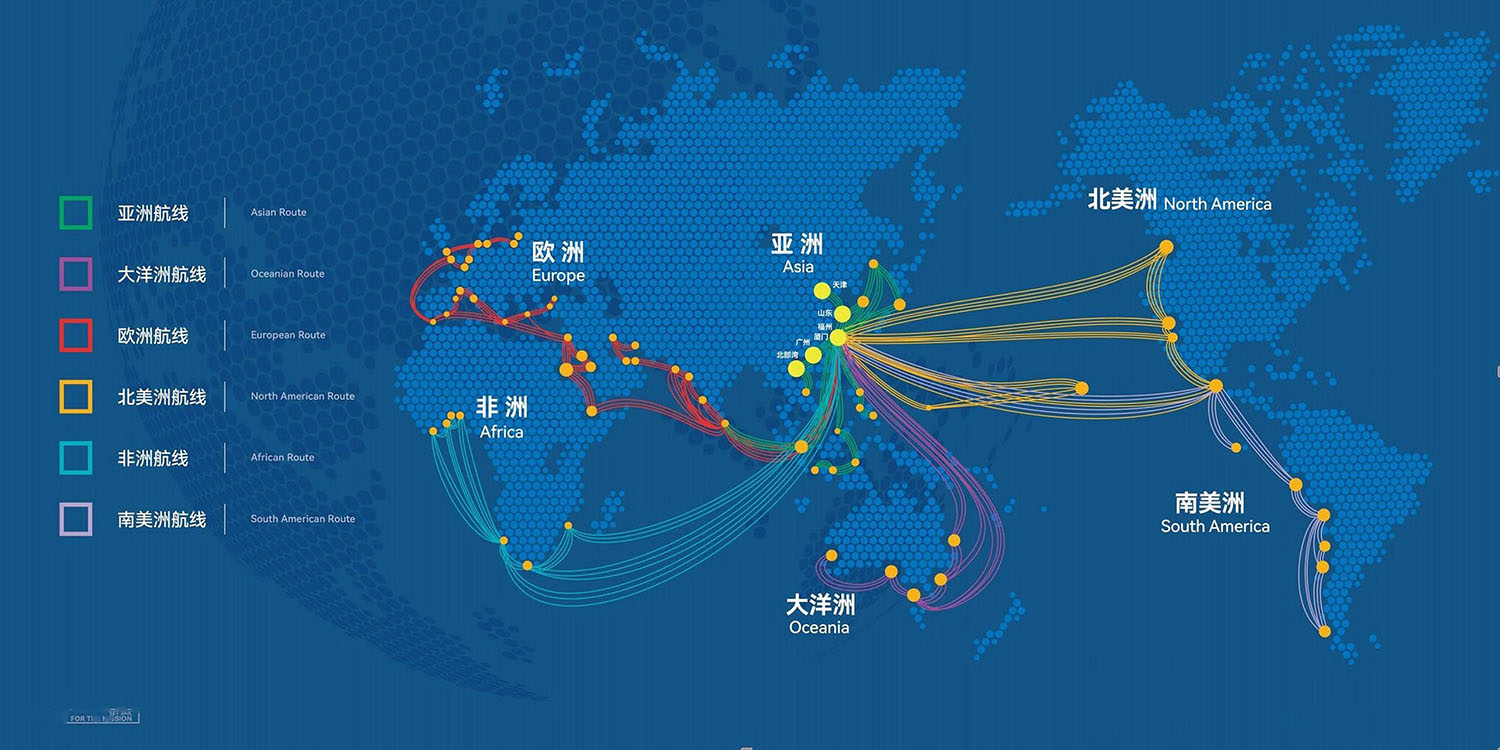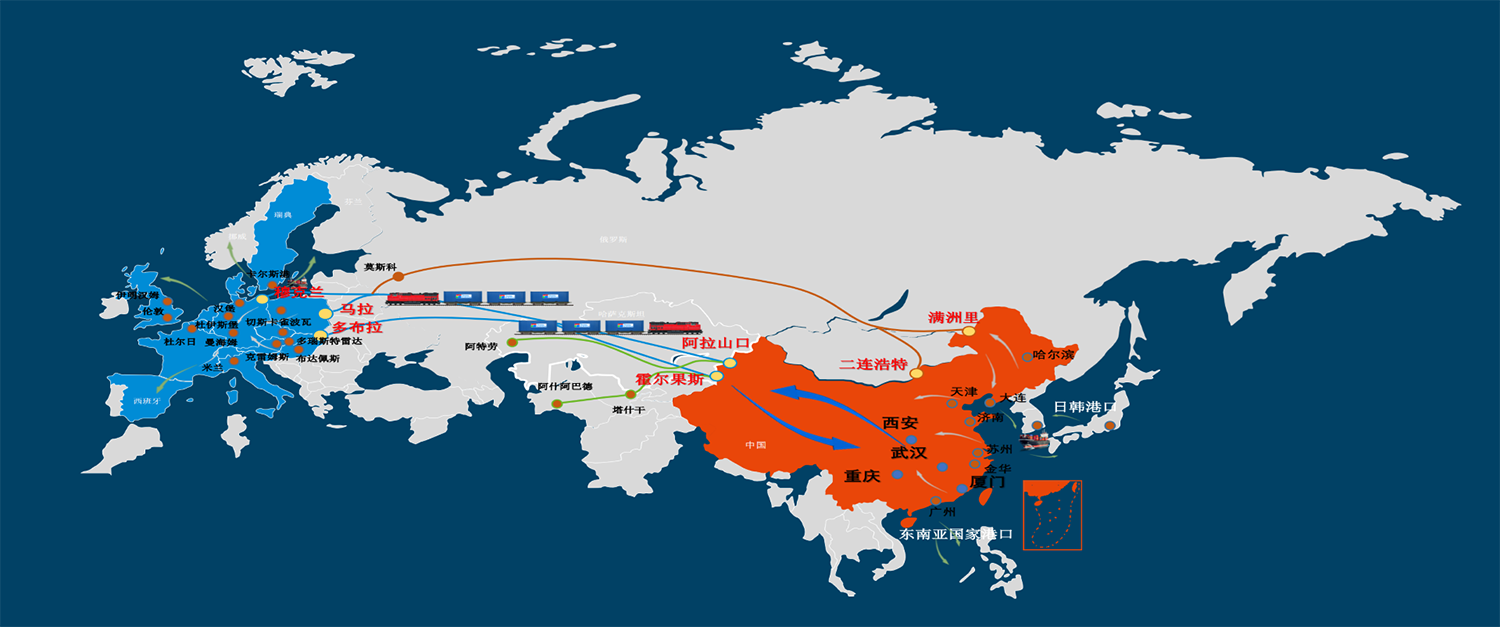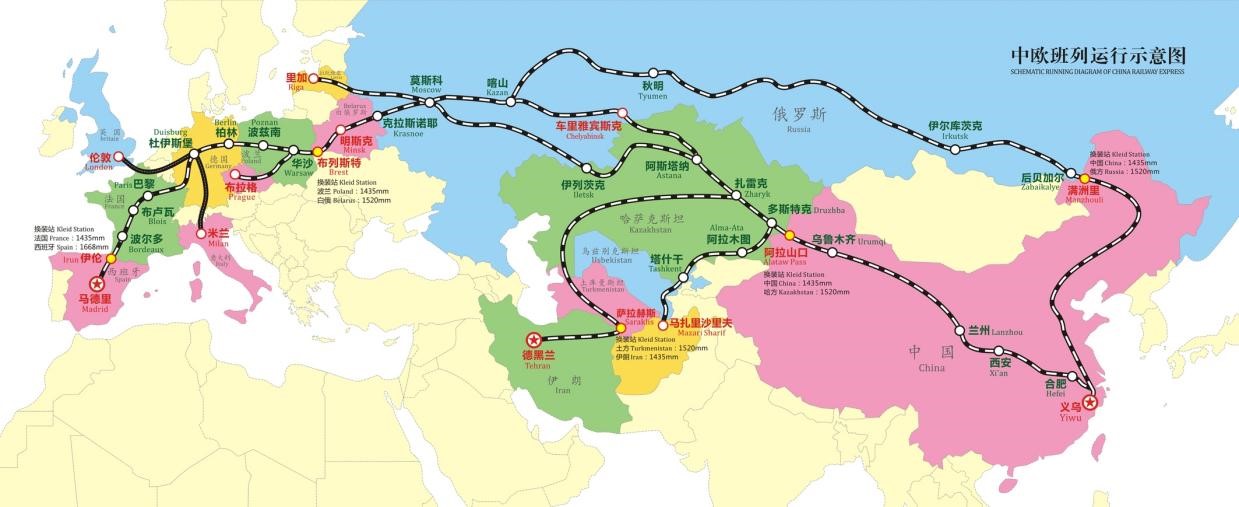China to Europe
China to Europe
Introduction to Diversified Logistics Routes from China to Europe
In today's increasingly globalized world, the demand for cargo transportation from China to Europe continues to grow. To meet this demand, various logistics modes have emerged, including air freight, sea freight, and rail freight. Each of these modes has its own strengths and weaknesses, suitable for different types of goods and transportation needs. Below, we will provide a detailed introduction to these three logistics routes from China to Europe.
Air Freight Routes
Air freight has become an important logistics mode connecting China and Europe due to its efficiency and speed. Many major airlines, such as Air China (CA) and Lufthansa (LH), offer services from major Chinese cities to multiple European cities. These flights cover not only major commercial and transportation hubs in Europe, such as London, Paris, Frankfurt, and Moscow, but also provide a rich flight frequency to meet the transportation needs of various urgent and time-sensitive goods.
The advantages of air freight lie in its speed and high safety, making it particularly suitable for high-value, small-volume, light-weight, or time-sensitive goods. For example, personal urgent documents, high-tech products exported by foreign trade companies, and consumer goods that need to reach the market quickly. At the same time, some logistics companies, such as Dashun, also provide one-on-one customized services, formulating transportation plans according to customer needs, including value-added services such as tax inclusion and customs clearance, making air freight more convenient and worry-free.
Sea Freight Routes
Sea freight has become one of the main logistics modes for Sino-European trade due to its low cost and large transport capacity. There are mainly two sea freight routes from China to Europe: one is through the South China Sea, the Strait of Malacca, the Indian Ocean, the Cape of Good Hope into the Atlantic Ocean, and ultimately to Europe; the other is through the Suez Canal, crossing the Mediterranean Sea, entering the Atlantic Ocean, and reaching Europe. Both routes pass through multiple important ports and straits, such as Singapore, Bombay, the Red Sea, the Suez Canal, and the Strait of Gibraltar.
The advantages of sea freight lie in its low cost and large transport capacity, making it particularly suitable for bulk cargo, low-value cargo, or cargo that is not time-sensitive. For example, raw materials, industrial products, agricultural products, and daily necessities. However, the disadvantages of sea freight include a longer transportation time, significant impact from weather and ocean conditions, and certain safety risks. Therefore, when choosing sea freight, it is necessary to comprehensively consider factors such as the nature of the goods, transportation time, and cost.
Rail Freight Routes
In recent years, with the promotion of the "Belt and Road" initiative, China-Europe trains have gradually become an important logistics channel connecting China and Europe. China-Europe trains, with their advantages of efficiency, economy, large transport capacity, and high safety, have gradually become the third major logistics option for Sino-European trade, after sea and air freight. Currently, there are three main railway transportation corridors between China and Europe: the Western Corridor, the Central Corridor, and the Eastern Corridor.
The Western Corridor mainly serves import and export goods from southwestern, northwestern, central, northern, and eastern China regions. It connects with Kazakhstan and Russian railways through the Longhai and Lanxin railways at the Alataw Pass (Horgos) railway port in Xinjiang, passing through Belarus, Poland, and other countries, and ultimately reaching other European countries. The Central Corridor and the Eastern Corridor serve import and export goods from central and northern China, as well as eastern, southern, and northeastern China regions, respectively. They connect with Mongolian and Russian railways through railway trunk lines such as Jingguang, Jingbao, Jier, and Jinshu, Jingha, Binzhou, and ultimately reach Europe.
The advantages of rail freight lie in its relatively short transportation time, low cost, high safety, and environmental friendliness. China-Europe trains also provide door-to-door services, transporting goods directly from Chinese factories to European customers, greatly improving logistics efficiency. However, the disadvantages of rail freight include limited transport capacity and frequency due to railway line and port capacity constraints, as well as certain requirements for the size and weight of goods.



Europe
| Shipping Channel | Duration |
|---|---|
| Standard Sea | 45-55 days |
| Express Sea | 35-40 days |
| Air transport channel | Duration |
| Standard Air(带电渠道) | 10-15 days |
| Express Sea | 7-9 days |
| UPS,DHL Express | 3-5 days |
| Rail transport | Duration |
| Express Train | 30-35 days |
| Qatar Airways | Duration |
| Express Truck | 25-30 days |
UK / DE and Europe
Get A Free Quote
In 24 Hours
Partner of Reputable Shipping Companies
 Shipping from China to Belgium
Shipping from China to Belgium Shipping from China to Czech
Shipping from China to Czech Shipping from China to Denmark
Shipping from China to Denmark Shipping from China to Finland
Shipping from China to Finland Shipping from China to France
Shipping from China to France Shipping from China to Germany
Shipping from China to Germany Shipping from China to Hungary
Shipping from China to Hungary Shipping from China to Italy
Shipping from China to Italy Shipping from China to Latvia
Shipping from China to Latvia Shipping from China to Lithuania
Shipping from China to Lithuania Shipping from China to Luxembourg
Shipping from China to Luxembourg Shipping from China to Monaco
Shipping from China to Monaco Shipping from China to Netherlands
Shipping from China to Netherlands Shipping from China to Norway
Shipping from China to Norway Shipping from China to Poland
Shipping from China to Poland Shipping from China to Portugal
Shipping from China to Portugal Shipping from China to Russia
Shipping from China to Russia Shipping from China to Romania
Shipping from China to Romania Shipping from China to Spain
Shipping from China to Spain Shipping from China to Sweden
Shipping from China to Sweden Shipping from China to Switzerland
Shipping from China to Switzerland Shipping from China to the UK
Shipping from China to the UK Shipping from China to Ukraine
Shipping from China to Ukraine

